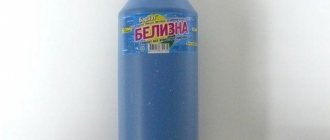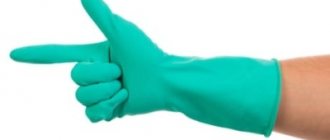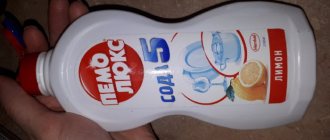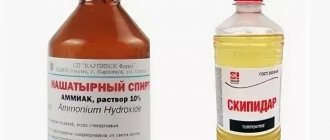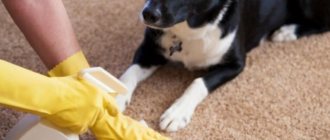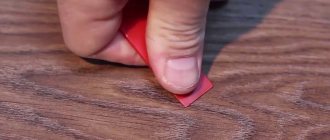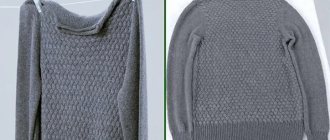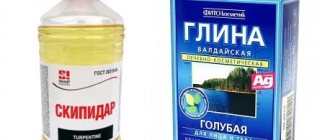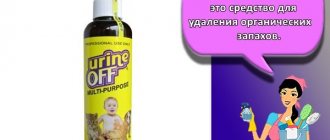How can you remove silicate glue from clothes without ruining the fabric? Probably, this question has arisen for everyone, because silicate glue is often used in everyday life, and sooner or later everyone faces the problem of removing glue stains from things. Fortunately, it is not very difficult to remove silicates from fabric; you can return your favorite item to its original appearance without resorting to dry cleaning.
You can remove glue stains at home
PVA
Fresh PVA stains can be removed from any material.
- If the glue has not yet penetrated into the structure of the fabric, carefully remove it from the surface of the clothing with a terry cloth or napkin.
- Place the stained area under running warm water from the reverse side.
- Lather the area with laundry soap and leave for 5-10 minutes.
- Wash and rinse.
When removing dried PVA stains, you should take into account the characteristics of the fabric.
- To get rid of a stain on cotton or denim, first dissolve it. Soak a cotton pad in vinegar and wipe the stained area with it. The glue will come off like a film. Then wash the clothes in warm water.
- If the glue has become embedded in the suede, hold the fabric over steam for 10 minutes. Then remove it with a cotton pad soaked in ammonia.
- To remove stains from delicate fabric, place the item in the freezer for an hour and a half. The glue will become brittle and it will be enough to clean the item by hand.
Do not use solvents or alcohol solutions on delicate fabrics. This may result in material damage.
Extreme surface cleaning methods
If the stain is old and it was not possible to get rid of it using any of the above methods, you need to pay attention to extreme methods. It is worth noting that you need to resort to them only in extreme cases, since during the implementation process there is a high probability that the glass will crack:
- Setting fire to alcohol. A small amount of alcohol is applied locally to the area of contamination and set on fire. After the fire goes out on its own, the softened adhesive mass can be removed using a stationery knife or blade. Finally, the residues are removed with a soft rag or sponge soaked in clean water.
- Heating with an iron or hairdryer. Traces of glue from a car sticker are usually removed in this way: a stream of hot air is directed to the stained areas. As it burns, the glue is easily removed.
Another fairly common problem is how to wash your hands off adhesive from a windshield or any other glass surface. To remove dirt from the skin, use sunflower oil, rich cream or white spirit solution, liquid soap or nail polish remover.
When removing stains from glass, it is important to follow personal safety rules, since almost all compositions are quite aggressive. To avoid the development of an allergic reaction or chemical burns, you need to work with rubber gloves and a respirator.
"Titanium"
“Titanium” firmly binds various materials, so it is difficult to remove from clothing.
- Place the product on a horizontal hard surface and cover with another cloth on top. Gently tap with a hammer or other hard object and use your hands to separate the adhesive from the material. Wash the item in hot water and laundry soap.
- Natural fabric can be cleaned with acetone or dimexide. Apply a cotton swab soaked in the product to the stain for half an hour, then scrub with a stiff brush.
What to do if you don’t have a glue gun - glue for foamiran
The best glue for working with foamiran
is silicone glue, as it can be used with a glue gun, which is very convenient.
But if you don’t have this tool on hand, you can use other types of glue to work with plastic suede:
- Cosmofen CA 12 (COSMO CA-500.200) . It grips many different materials, quickly fixes the surfaces to be glued, has high strength, is resistant to external atmospheric influences, high and low temperatures, and does not contain dyes. It is used in the production of toys, processing of rubber, including foamiran, plastics, making jewelry and in many other industries. The cost of a tube weighing 20 g: 99 rubles.
- PVA White Glue from Leeho. It does not deform the surfaces being glued, does not soak the paper, has a thick consistency and white color, and becomes transparent after drying. Does not contain toxins. Used in cardmaking, quilling, scrapbooking and many other types of creativity. Excellent gluing of paper, cardboard, wood and fabric. Suitable for gluing various decorations to foamiran. It has two different dispensers at both ends: for spot application and for applying glue over a large area. The cost of a tube weighing 28 g: 50 rubles.
- Moment Crystal. A clear, quick-fix adhesive solution suitable for both soft and hard materials. Used for gluing rubber, PVC, paper, plastic, foam rubber, cardboard, wood, metal, glass and ceramics. Cost of a 30 ml tube: 58 rubles.
As mentioned just above, it is most convenient to use a glue gun to assemble foamiran parts.
But when using it for foam, you need to know the rules for working with it:
- Before starting work, insert the glue rod into the special hole in the heat gun;
- Plug the tool into a power outlet;
- Heat the gun for 5-7 minutes;
- Carefully pull the trigger - if glue starts to come out of the nozzle, it means it has melted and is ready for use;
- Unplug the heat gun from the outlet for 5 minutes if you do not use it for a while;
- Apply glue evenly and in small quantities to the foamiran, gently pressing the trigger;
- Do not touch the melted glue while working with it, otherwise you may get burned;
- When finished, unplug the gun and let it cool down;
- Wipe off any remaining adhesive with paper or cloth.
Silicone
Silicone sealant hardens at room temperature. If it gets on the fabric, immediately stretch the fabric so that the glue hardens in the form of a film that can be easily removed by hand.
For dried stains you can use vinegar:
- Soak a cotton swab in vinegar and blot the stain.
- Leave for 30-35 minutes.
- Then wash with laundry soap.
For old and large stains on natural fabrics, use acetone:
- Blot the stain with a cotton pad soaked in acetone. If the area of contamination is very large, you can use a piece of white cloth instead of cotton wool.
- Leave for 30–40 minutes.
- When the glue clumps together, scoop them up with a soft brush or sponge.
- Wash as usual.
Superglue is easy to remove
If such a quick-hardening substance gets on the fabric, it will not be possible to remove the stain. Therefore, we need to act differently. Oddly enough, you will have to remove the stain with a heated iron. But first you need to wait until the glue completely hardens.
Take the gauze and place it directly on the treatment area. Then run the hot iron over the area several times. Under the influence of temperature, the glue first crystallizes and then disintegrates. Therefore, actions must be performed until the stain disappears. Small particles from the fabric can be washed under running water.
And to ensure that your clothes always look impeccable, put on an apron before gluing anything and teach your children to do this. Then the work of making handmade items or minor repairs will bring only positive emotions.
How to remove glue from shoes
It is necessary to remove glue from shoes taking into account the surface material.
Suede
If the glue has not yet dried, it can be removed using a metal nail file. The adhesive must be carefully collected in a circular motion.
You can remove old stains using ammonia (5%) or nail polish remover (without acetone). You need to moisten the contaminated area with one of these products and remove the softened mass with a cotton swab.
Shoes made of fabric can be cleaned using any alcohol-containing product: apply to the stain for 15 minutes and remove the glue.
Leather and leatherette
- Moisten the glue with acetone.
- Leave for an hour.
- Wipe with a soft brush.
- Repeat as necessary.
- Apply shoe paint.
How to glue accessories to a PVC boat?
Mix Two-Component Polyurethane PVC Boat
with hardener (1:25) Attention! The viability of the glue after mixing both components is only 2-3 hours; Apply a thin layer of polyurethane glue with a brush to BOTH grease-free surfaces, wait until the glue dries (10-15 minutes);
Interesting materials:
How to vote in whatsapp chat? How to vote in Google Form? How to vote on Instagram stories? How to vote in WhatsApp group chat? How to do voice search on a computer? How to make voice input on a computer? How to do voice input on Android? How to make a voice call on Android? How to make Google Chrome in Russian? How to make Google the default search in Explorer?
How to remove label marks from clothes
If the manufacturer has not taken care of the quality of the labels, then traces of them on clothes are difficult to remove. If you cannot roll up the remaining sticker with your fingers, you can try three proven methods:
- Use masking tape. Stick it on the footprint and pull it off with a sharp movement.
- Warm up the label mark with a hairdryer, then apply vegetable oil to the area. And immediately remove it along with the adhesive substance with a rag.
- Apply vegetable oil to the fabric and leave for 5-10 minutes. The glue can be easily removed using a plastic card or a piece of cloth of the same material.
Oil methods are only suitable for natural fabrics. Oil stains are difficult to remove from synthetic materials.
There are a lot of means that you can use to get rid of the sticky stain and save your clothes. The result will be positive if you follow the instructions. You can also take the item to a dry cleaner, where professionals will clean the item.
Comments 46
reply to comment by Lech 1984
Hello. Tell me in what proportion should rubber glue grade A (in 50 ml tubes “NOVBYTHIM”) be diluted with “Galosha” gasoline (nefras-s2) to obtain the optimal composition of the glue. Is the stickiness lost when diluted?
reply to comment by Lech 1984
Hello. Tell me in what proportion should rubber glue grade A (in 50 ml tubes “NOVBYTHIM”) be diluted with “Galosha” gasoline (nefras-s2) to obtain the optimal composition of the glue. Is the stickiness lost when diluted?
reply to comment by Lech 1984
Hello. Tell me in what proportion should rubber glue grade A (in 50 ml tubes “NOVBYTHIM”) be diluted with “Galosha” gasoline (nefras-s2) to obtain the optimal composition of the glue. Is the stickiness lost when diluted?
reply to comment by Lech 1984
Hello. Tell me in what proportion should rubber glue grade A (in 50 ml tubes “NOVBYTHIM”) be diluted with “Galosha” gasoline (nefras-s2) to obtain the optimal composition of the glue. Is the stickiness lost when diluted?
reply to comment by Lech 1984
Hello. Tell me in what proportion should rubber glue grade A (in 50 ml tubes “NOVBYTHIM”) be diluted with “Galosha” gasoline (nefras-s2) to obtain the optimal composition of the glue. Is the stickiness lost when diluted? __________________________
Reply to ViktorL's
It's useless! Nothing will definitely stick to my base.
